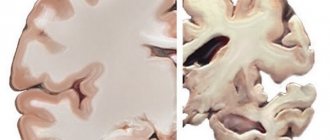Emotions as the foundation of life perception
If you are interested in how to prolong youth and maintain health for many years, then you have probably read more than once in magazines or on the Internet sets of recommendations on how to achieve this. Very often, the last summing up point in such lists is the recommendation to look at the world with optimism and focus only on the positive that comes into your life. Despite the fact that it is impossible to argue with this advice (after all, everything is true), to many it seems not only useless, but also absurd. You cannot flutter infantilely over your problems, like a dragonfly from a fable. Otherwise, there will be a risk of repeating her fate.
Krylov's dragonfly in this context is not the best example. She is uninitiative and frivolous. Her reluctance to take responsibility for her life played a bad joke on her. Therefore, as an objective example, it is better to take Pollyanna, the heroine of the story of the same name by Elionor Porter. The peculiarity of Pollyanna's character was her unusual view of negative events. The little orphan, who had been accustomed to endure hardships since childhood, had plenty of reasons to lose faith in life. But she set a goal to be happy at all costs. This is how Polianna’s amazing philosophy of life was born: “If they throw lemons at you, make lemonade out of them. People around you don’t like you - this is a great reason to make friends with them.” What was the girl doing? She turned punishment into reward and in such an unusual way won the battle with the cruelty of the surrounding world.
How important?
Is it true that a positive mood is the key to attracting happiness?
Here it makes sense to recall the famous full-length cartoon “Puzzle,” which perfectly showed why sadness is no less important than joy .
Each mood is important for something: it helps to find a common language with people experiencing similar sensations, develops empathy, and gives a sense of the diversity of life.
After all, every person has ever felt a light sadness during cloudy weather and felt at that moment something very similar to happiness.
Positive emotions are definitely important. But trying to hold back the negative is extremely dangerous for your mental health.
It is necessary to look for ways to eliminate a negative mood only in cases where it continues for a long time and seriously interferes with life.
A harmoniously elevated or neutral mood is the key to happiness and stability. But it is impossible to be happy all the time : happiness is a hormonally determined state that lasts for a limited time.
Therefore, it is important to be able to manage your mood and maintain motivation to keep life interesting.
What is a mood? Find out about this video:
We don't think about where our mood comes from. It seems that it is not amenable to rational correction and lives “on its own.” Of course, this is not true; mood is a mechanism that can and should be controlled.
The relationship between emotions and physical health. What do scientists say?
Medicine does not deny the direct influence of a person’s emotions on his physical well-being. However, she pays more attention to the impact of negative emotions in order to find methods to combat it. Thus, a direct connection has already been proven between severe stress and the development of ulcers. Anger is a threat to people with cardiovascular disorders. There are plenty of analogies, since the effect of negative emotions in general reduces immunity and the willingness to resist illness.
But, emotions with the “+” sign are of more interest. If they are truly capable of healing, then they are a powerful resource for the body and an impetus for the development of new methods of therapy without drugs. There are many confirmed cases where a seriously ill person with a strong desire for life completely recovered. In such people, cases of resorption of malignant tumors were recorded and it was impossible to explain this from a scientific point of view. But the fact remains a fact.
Scientists at the University of Pittsburgh conducted an experiment by dividing experimental optimists and pessimists into two groups and asking them to complete several tasks. It was found that people who approached their tasks with optimism and a healthy dose of indifference were 34% more effective at solving them than panickers who were involved in negative experiences. The work with the groups did not end there. To prove the direct impact of emotions on physical condition, scientists “planted” a cold virus in each of the groups. The results surprised even the skeptics. Participants in the optimist group either did not feel the symptoms of a cold at all, or successfully and quickly dealt with it. And the group of pessimists experienced all the dubious delights of the disease to the fullest. At the same time, the average pain threshold of participants in the “optimistic” group was 17% higher than that of negatively thinking experimental subjects.
What is his background?
Also, the mood has a background, which is divided into:
- Reduced. It includes all types of mood that can be classified as low: sad mood, depressed, irritable, apathetic, and so on. The expression “low mood” is often used in specialized literature: in materials about mental disorders, since a long-term low mood indicates the presence of a mental illness.
- Elevated. Includes types of mood that are classified as elevated: joyful, happy, elated, inspired, interested, romantic and others.
As in the case of a low background, a long-term (more than two weeks) elevated mood level can be a sign of mental (and sometimes somatic) diseases.
The mood may be:
- Sustainable. The mood does not undergo significant changes for a long time and does not change to another.
If a person remains depressed or, conversely, inappropriately elevated for more than two weeks, it is important for him to go to the hospital .
Games played by hormones
To join the group of lucky optimists, it is not enough to simply smile, call black white and rejoice in failures. It looks stupid and unnatural. You don’t need to appear to be an optimist, you need to be one. There are very specific prerequisites for this state. Namely, a sufficient level of hormones in the body that are responsible for good spirits. Without them, you can put a smile on your face as much as you like, but these efforts will be in vain.
Hormones are substances that are produced through the internal secretion organs. They act as chemical coordinators and, in their interaction, are responsible for the operation of all the gears of a huge mechanism. The slightest shift, imbalance or failure of hormones threatens us with psychological instability and loss of health. Now let’s take a closer look at the little sponsors of our psychological and physical well-being.
Serotonin and optimism
The main function of this hormone is the transmission of impulses between nerve cells. If there is a deficiency of serotonin in the body, morale plummets, leading to despondency, and then into prolonged depression. At the same time, intellectual and physical activity decreases, the functioning of the digestive and reproductive systems deteriorates, immunity decreases, and healthy sleep disappears. We indirectly obtain serotonin from food. In order for the hormone to be produced in the required quantity, it needs the amino acid tryptophan. It is found in products such as:
- legumes;
- cottage cheese;
- hard cheeses;
- buckwheat grain;
- mushrooms.
If serotonin levels drop, also include magnesium-rich foods in your diet:
- bananas;
- seafood;
- seaweed;
- dried fruits;
- bran.
Walk outdoors on sunny days, train your brain with puzzles, read more and do what you love. Serotonin loves it.
Dopamine and pleasure
Like serotonin, this hormone belongs to the group of neuromoderators. It is with its help that we experience the pleasure of intimate contact, as well as the pleasure of the taste of food. At the same time, dopamine is produced not only in the process, but also in anticipation of pleasure, which increases its significance and prolongs the pleasant sensations. However, sometimes dopamine plays a cruel joke on a person, hooking him on alcohol and illegal drugs. Therefore, it is better not to use them as a source of dopamine.
Adrenaline, norepinephrine and stress
Nature has built into humans two types of reactions to danger. It's hit or run. Norepinephrine is responsible for the first action. Its task is to accumulate the body’s strength, activate the brain, increase muscle tone and blood flow. On an emotional level, the release of norepinephrine manifests itself in courage, determination and bravery. The task of adrenaline is to signal danger in time and resolve the problem as quickly as possible (get out of a conflict, pass an exam, avoid an accident, etc.). Both hormones are produced by the adrenal glands. Exceeding their concentration threatens the body with moral and physical exhaustion, the appearance of phobias, and anxiety states. To prevent them, avoid stress and situations that tickle your nerves.
Endorphins and euphoria
Endorphins are the best friends of dopamine and serotonin. As a rule, they operate in parallel. These hormones act as a natural pain reliever and sedative. But the most amazing property of endorphin is its ability to cause pure, genuine (puppy, if you like) joy. Its sources may be:
- listening to your favorite music or watching a movie;
- communication with children or animals;
- reading a good book;
- leisure time in pleasant communication, etc.
The release of endorphins is a short-term phenomenon. It is about him, as about fleeting happiness, that is sung in songs and poems.
Phenylethylamine and love
Love at first sight exists and a very specific substance is responsible for it. In tandem with serotonin and dopamine, phenylethylamine causes sexual desire, emotional outburst, feelings of sympathy and desire for intimacy. It is this cheerful trio that people should be grateful for their bright but short holiday romances. The fact is that the complex of these hormones comes into effect only under favorable external circumstances and a level of stress reduced to zero. And where, if not on vacation, do all these components come together successfully?
Oxytocin and emotional intimacy
Oxytocin is a female hormone. In the body of a pregnant woman, this substance regulates uterine contractions and the process of lactation when in contact with the baby. However, the production of oxytocin occurs not only during pregnancy, childbirth and breastfeeding. This hormone lives in the body, regardless of gender. It forms in a person the ability to trust, penetrate, and become attached. An active release of oxytocin occurs during tactile contact. Therefore, a hug between loved ones is not just a gesture of trust. It is the source of the joy and love we give each other, both physically and chemically. Oxytocin relieves stress, anxiety, gives a feeling of security and even treats autism.
Testosterone and the joy of triumph
Testosterone is the hormone of the strong half of humanity. Of course, conditionally. It is responsible for the level of libido, the severity of secondary male sexual characteristics, and erectile function. At the emotional level, testosterone is responsible for the formation of competitive advantages in the social environment, ambition, psychological and physical endurance. Testosterone produces success in various areas of life. But this process also has pitfalls. Once the peak is reached, there are no new victories, and hormones are produced in the same volumes, there is a risk of depression and apathy. This is often faced by athletes, business sharks and other people with an active lifestyle.
The endocrine system is responsible for the production of hormones in the body. Our well-being depends on it. But, in addition to the physical sphere, hormones control our psycho-emotional state, help us build a successful career, and realize ourselves in other equally important areas of life. Does our health depend on emotions? Undoubtedly! Therefore, it is important to take care of yourself, take care of your health and know that our well-being is always in our hands!
Scale
Ron Hubbard is the founder of the tone scale, which is directly related to the topic of mood and emotions in general.
Every person experiences mood swings, but by observing him and noting his emotional state on the tone scale over a long period of time, you can understand what mood is constant and basic for him.
R. Hubbard proposed an extensive list of conditions, each of which has its own score. If a person, according to the results of the study, is below the 2.0 mark, he is called low-tone, if higher, he is called high-tone.
If positive events have occurred in a person’s life, he moves up the scale; if negative events occur, he moves down.
The higher a person is on the scale, the easier it is for him to achieve high results in life.
List of emotions with points:
Watch the video
- Stanislava Starikovskaya
- 07.01.2017
- 52293
- 0 Comments
The mood persists steadily for a long period of time, which is why it affects all processes occurring inside and outside the human body, both physical and, of course, mental. It would not be a great exaggeration to say that success in life and the quality of a person’s life depend on mood, or rather, on what that mood is like. So what is the mood like?
Types of moods
Bad and good mood are states that we understand, but this classification is very simplified. In addition, conflicting emotions can be mixed at the same time.
For example, you met an old school friend. On the one hand, you are glad that you saw her and talked. On the other hand, you are embarrassed because it took you a long time to find answers to the questions. In addition, you may be disappointed that you didn't look your best.
In addition to good and bad, psychology distinguishes the following types of mood.
Sad
Characterized by a low emotional background and passive actions.
The person is not confident in himself, the level of self-esteem is low. Melancholy, apathy, sadness, melancholy, and aversion to any type of activity sets in.
Working
The mood is neutral, there is no particular joy, the level of activity is moderately active.
Cheerful. There is aspiration towards the goal. Expressed interest in productive work.
In a working mood, we are aimed at achieving success and get down to business with enthusiasm.
Joyful
Characterized by increased emotional tone and active actions.
A person is at the mercy of such feelings as love, trust, faith in success. The level of determination and desire to act is increased.
Negative
The emotional background is elevated, negative in nature, with a desire for active actions of a destructive nature.
Often arising against the backdrop of unforeseen undesirable situations, negative actions can be directed towards other people and even inanimate objects. A person is capable of hitting, starting to destroy pieces of furniture, i.e. throw out irritation outward.
Neutral
The emotional tone is muted, perhaps slightly increased, but the activity is low.
Characteristics of this mood:
In such states, we observe what is happening from the outside, analyze events and people’s actions, and draw conclusions. This is a kind of emotional rest, calm contemplation of reality.
The presented classification is also incomplete and cannot reflect all the shades of emotional states inherent in a person. People often confuse the concept of a bad or sad mood with depression. This is fundamentally wrong.
We have already said that mood is distinguished by such a feature as a short duration in time. If sadness and apathy last for weeks, it is necessary to undergo treatment, this is a pathology.
What kind of mood is there?
With all the variety of types of mood, a person usually characterizes it as good or bad.
A bad mood is...
The symptoms of low mood are known to everyone:
- everything seems hateful;
- laziness overcomes;
- there is no desire to communicate with family and friends.
Depending on mental characteristics, a person tries to either hide from the world or take it out on loved ones. We do not always understand the reasons for our condition, it is important to know one thing - a bad mood is an indicator that not everything is going well in our lives.
It is necessary to understand the causes of decreased tone, especially if the condition recurs regularly. After all, a bad mood that persists for a long time is already depression that needs to be treated. Constant despondency provokes other bodily ailments, including oncology.
Most often, this tone causes dissatisfaction with oneself, a feeling of guilt, and a lack of purpose. Calmly analyze what could have caused the decline in emotional background. A bad mood is a reason to delve into yourself. Why have I stopped loving myself so much that I allow sadness to ruin my life?
Eradicate dislike for yourself, pamper yourself like a little child. Sometimes a bad mood is a reaction to pathological processes in the body, changes in hormonal levels. In this case, you should consult a doctor for an examination.
good
A person in a cheerful mood can be identified even visually. He has a straight back and a mischievous look. Physiological processes are activated - the stress hormone cortisol is absent, heart function improves, facial muscles are relaxed, and an involuntary smile appears. Optimists and cheerful people look very young for quite a long time, their nasolabial folds are less pronounced.
In a good mood, we are ready to “move mountains”; any activity is productive and interesting. We enjoy doing household chores, finding pleasure in cleaning the apartment and plowing the potato field. At work, at such moments, we are able to redo everything that we have been putting off for a long time.











